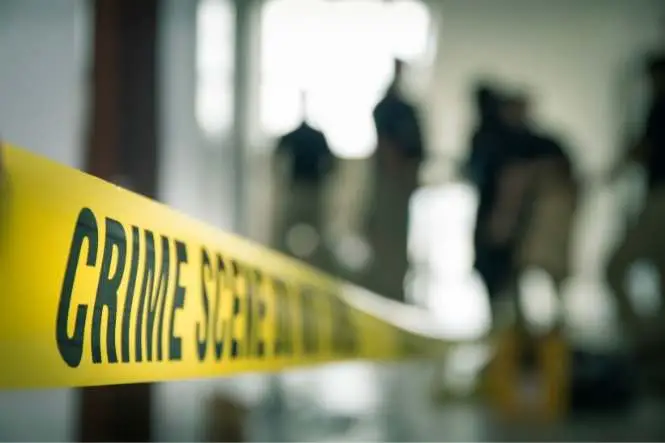In order for an officer of the law to establish a crime scene he or she must know what a crime scene is: simply put a crime scene is a location at which a crime has taken place and a location that may yield physical clues as to the nature of the crime and the person or persons responsible for it.
Securing The Scene
Once a police officer has determined the area to be regarded as a crime scene he or she must make it inaccessible to all but authorised personnel such as other police officers, Scenes of Crime Officers (SOCO) and a police doctor – or pathologist. It is important that the integrity of a crime scene is maintained wherever possible so as not to contaminate any evidence that may be available.
Protecting Evidence
If the crime scene is located outside then the officer may find it necessary to place a cloth or waterproof sheeting over anything that he or she might consider to be evidence. It is also important to note at this point that anything can be evidence – from the largest item to the smallest thing such as a cigarette end or piece of tissue. Anything that might look out of place in its current location more often than not is out of place and should be considered to be evidence.
Likewise if the crime scene is outside then the officer should be watching for vehicles moving around and people coming and going; it is after all not uncommon for the perpetrator of a crime to return to the scene to see how events are unfolding.
Protecting The Scene
It is of the utmost importance that members of the public and press are kept at arms length not only to preserve the crime scene but also to keep details of the crime to a minimum; too much information in the public domain can influence the outcome of any police investigation and can also lead to unwanted hoax calls and false confessions.
It is important to mark out footprints and tyre tracks that may have been left by the perpetrator of a crime and doing this can be done with tape or paper if it is available.
The police may also erect tents or tarpaulins to minimise the view of a crime scene to both press and public and also so that a police doctor or pathologist can carry out a cursory examination of a corpse before it is moved for autopsy. It is necessary that a corpse is examined at its current location so that no claims of bruising or post mortem injury can be made.
An officer who is first on the scene is also required to segregate any witnesses to the crime – if there are any – and make sure they are kept away from the media. Officers are also encouraged to make notes of strange smells or fragrances that may not be present at the time when the Scene of Crime Officer arrives.
All of these things are important and can provide vital information for Scene of Crimes Officers when they arrive on the scene. Crime scenes are often the most valuable resource when it comes to evidence and as such should be treated with care and due attention so that any vital clues are preserved and uncontaminated.


